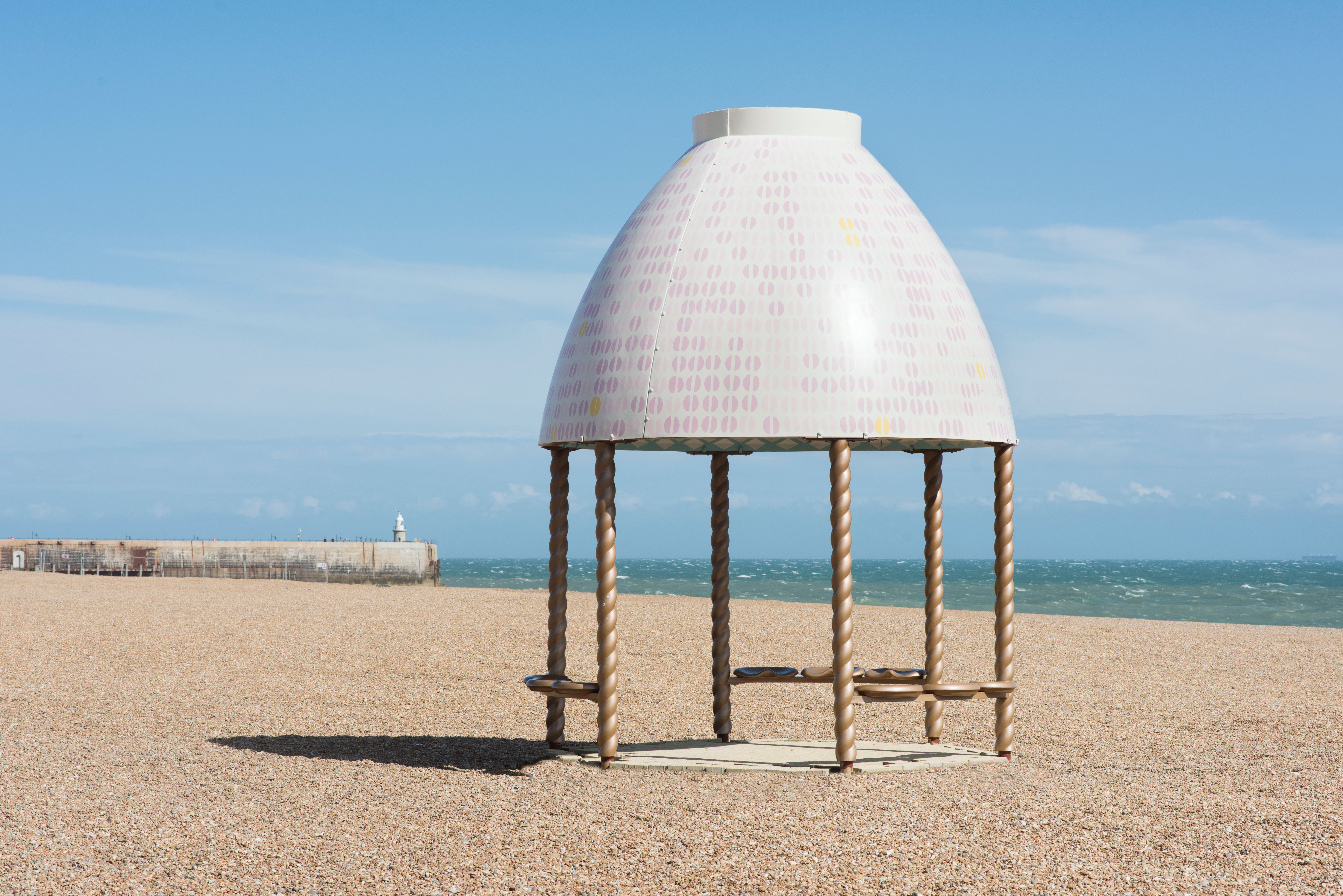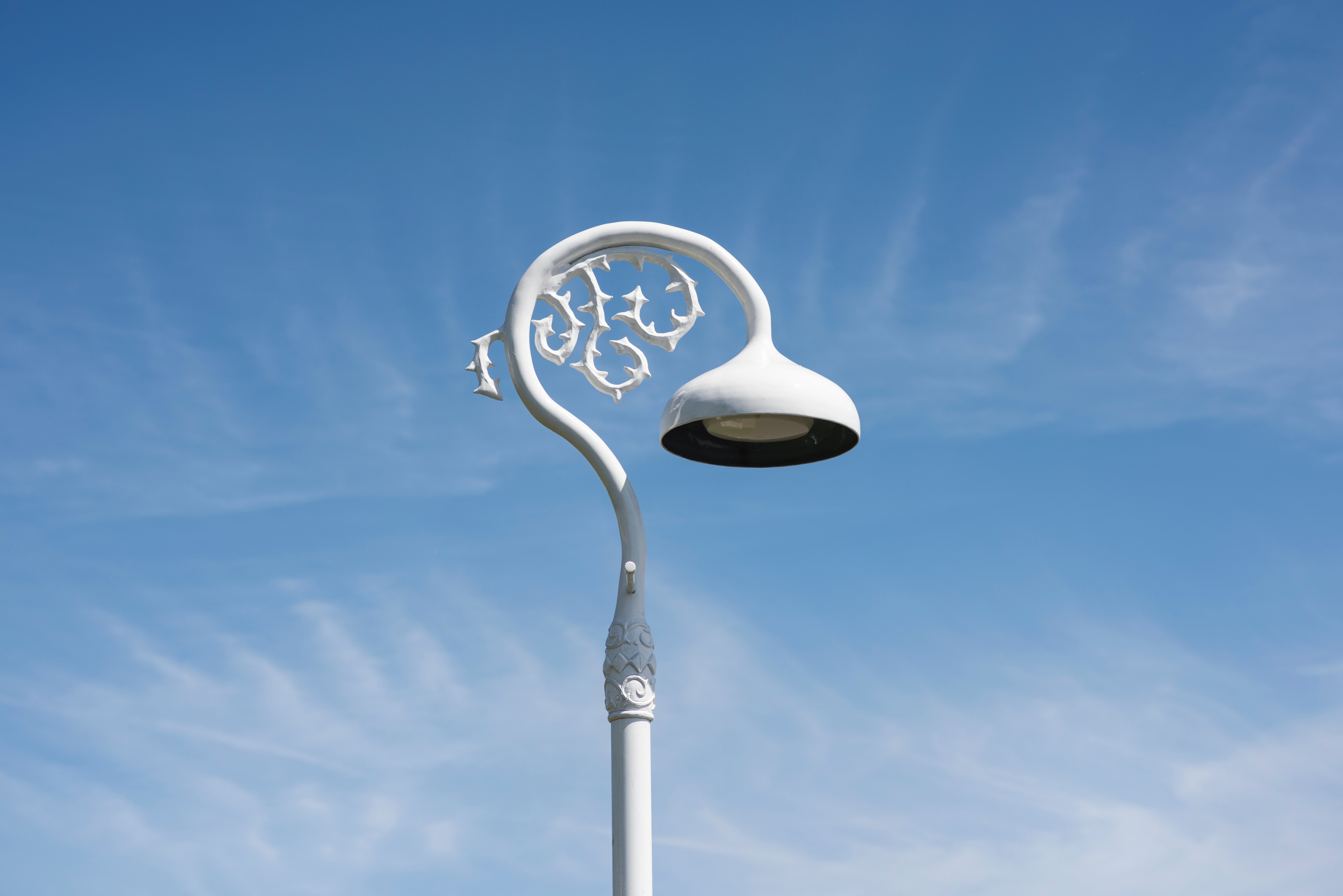The best way to explore Folkestone’s urban, open-air art gallery
Sophy Grimshaw takes a walk through the artworks of this historic Kent seaside town ahead of its 2021 triennial

Heaven is a place where nothing ever happens. It’s a Talking Heads lyric, and also the wording on an outsized, illuminated-text artwork by Nathan Coley, towering over pedestrians on Folkestone’s Tontine Street. Created in 2008 for the inauguration of the Folkestone Triennial, it references the ennui of British seaside resorts, and their traditions of convalescence and summer idleness.
Established contemporary artists who have created work for and about Folkestone include Tracey Emin, Antony Gormley, Cornelia Parker, David Shrigley and Yoko Ono, among tens of others. Folkestone Triennial populates this east Kent seaside town with new works – most temporary, some permanent – with every edition. Folkestone Artworks is the permanent works collection, which can be viewed year-round, and is the UK’s largest urban outdoor contemporary art exhibition. It’s soon set to grow further: a new edition of the Folkestone Triennial will open in 2021, running from July until November, having been postponed in 2020 because of the pandemic.

You wouldn’t know it from walking down it, but Tontine Street is also the location of a network of local artists’ and creatives’ work spaces, leased by Creative Folkestone – the arts charity which is responsible for the triennial, Folkestone Artworks and more. More eye-catching, and deliberately so, is the distinctive mesh facade of The Quarterhouse, home to Creative Folkestone’s concert, theatre and arts venue. Designed by architects ABA, winners of the Stirling Prize, as a local landmark, it opened in 2009: the year that a new high-speed train link made Folkestone a commutable 53 minutes from London St Pancras. At its end, towards the harbour, Tontine street is capped by a Michael Craig-Martin painting called Folkestone Lightbulb. A giant bulb in the artist’s signature hyper-bright palette, it arrived with the 2017 triennial. Keep walking for a few minutes, and you reach the sea.

It’s just 30 miles from Folkestone Harbour to France. There are artworks dotted throughout the characterful 19th-century harbour area; among the most noticeable, rising from the water, are Richard Woods’ vibrant Holiday Homes, 2017 works referencing the tensions around second home ownership and house prices. It’s a short walk along The Stade from here to Sunny Sands beach, and on the way you pass Steve, artist Sarah Stanton’s “people-friendly” steel pavilion sculpture from the 2014 triennial, which lives up to its mission statement and is a favourite for local kids to climb inside. Lounging on the rocks at the beach itself is Cornelia Parker’s celebrated statue, The Folkestone Mermaid. A riff on Copenhagen’s Little Mermaid tourist attraction, the anatomically correct figure was modelled on a local woman (which explains why it has legs).
It was here on Sunny Sands that the artist Michael Sailstorfer buried real gold bars in 2014 and invited the public to dig for them. His was among a strand of works that have been deliberately transient, but some of the permanent Folkestone Artworks pieces are also highly functional, such as Lubaina Himid’s Jelly Mould Pavilion on the shingle beach on the other side of the harbour arm. A jelly-mould-shaped shelter, incorporating benches where you can sit and eat your sandwiches, it appears whimsical, but also references the black British and refugee experience. It’s been a local landmark since the 2017 triennial, as has artist Sol Calero’s trippy, culture-crossing beach shelter.
Read more:
There are currently 74 artworks scattered throughout Folkestone, and it is impossible to see them all in a day on any one route (Creative Folkestone’s website has four suggested route maps available to download). But it’s worth prioritising a trip to the works on the scenic clifftop promenade of The Leas, reached from the beaches by ascending the slopes of the town’s unique Zig Zag Path. This mile-long stretch, with its neat, bright lawns and expansive views across the channel, sparkles with the residual glamour of imposing seafront hotels. Art works here include David Shrigley’s Lamp Post (as remembered), one of my personal favourites from all the triennials. To create it, Shrigley invited artist Camille Biddell to visit The Leas and gave her 40 seconds to memorise its lamp posts. Biddell then manufactured one purely from memory, which has stood here since 2017. Take a look and see how close a match you feel it is to its neighbours.

Among the other works on The Leas are a plea for peace from Yoko Ono, which is sent out in morse code from the top of The Grand Hotel (Earth Peace, 2014); a clock face with only 10 hours, which references a 1793 time-telling experiment in nearby France (artist Ruth Ewan’s We Could Have Been Anything That We Wanted To Be, 2011); and a colour-chart wheel that lets you find and match the colour of the sea that day (Spencer Finch’s The Colour of Water, 2011).
This mile-long stretch, with its neat, bright lawns and expansive views across the channel, sparkles with the residual glamour of imposing seafront hotels
For a place to stop and reflect, there’s Cristina Iglesias’s faintly mesmerising Towards the Sound of Wilderness (2011): a walk-in mirrored structure that, once you step inside, allows you to view the overgrown Napoleonic Martello tower. Or simply sit and look out to sea on one of the four benches that play The Whispers, Christian Boltanski’s 2008 sound artwork in which actors read captivating letters to and from First World War servicemen who passed through Folkestone.

Not everyone likes contemporary art. But it would be hard to argue that Folkestone Triennial and Folkestone Artworks have been anything other than an off-the-charts success story for the east Kent coast, having drawn record-breaking numbers of new visitors here and enriched the town for residents. As the UK enters an era that looks set to favour domestic British holiday destinations and walkable, outdoor cultural sites, Folkestone’s unrivalled collection of accessible contemporary art positions it well. A 2021 edition of the Folkestone Triennial can only add to this seaside town’s unique appeal. Maybe Folkestone’s “post-heyday” era is finally over.
Travel essentials
For full details and a choice of walking routes designed by Folkestone Artworks, as well as more details on the forthcoming 2021 Folkestone Triennial, visit creativefolkestone.org.uk
Join our commenting forum
Join thought-provoking conversations, follow other Independent readers and see their replies
Comments